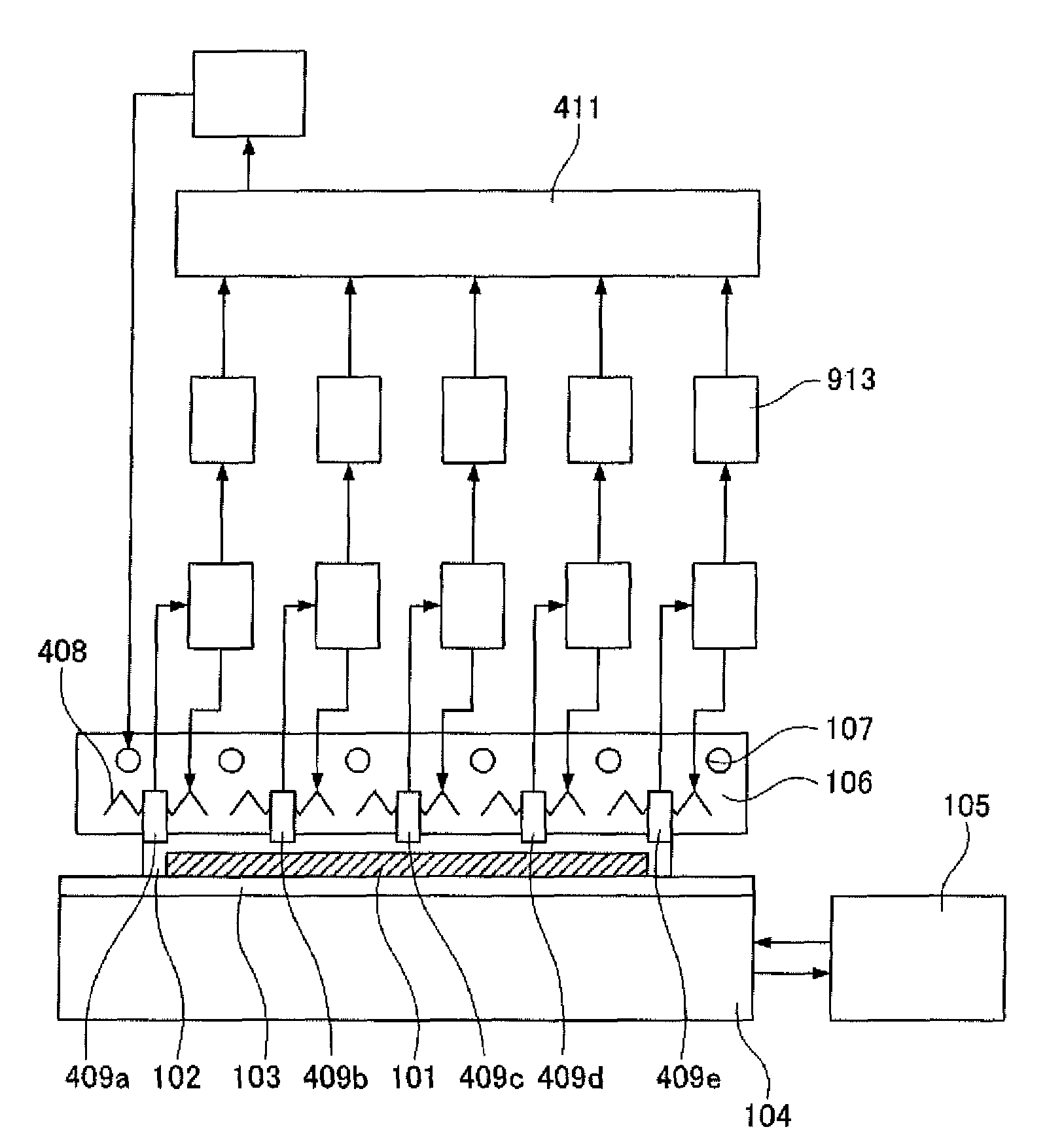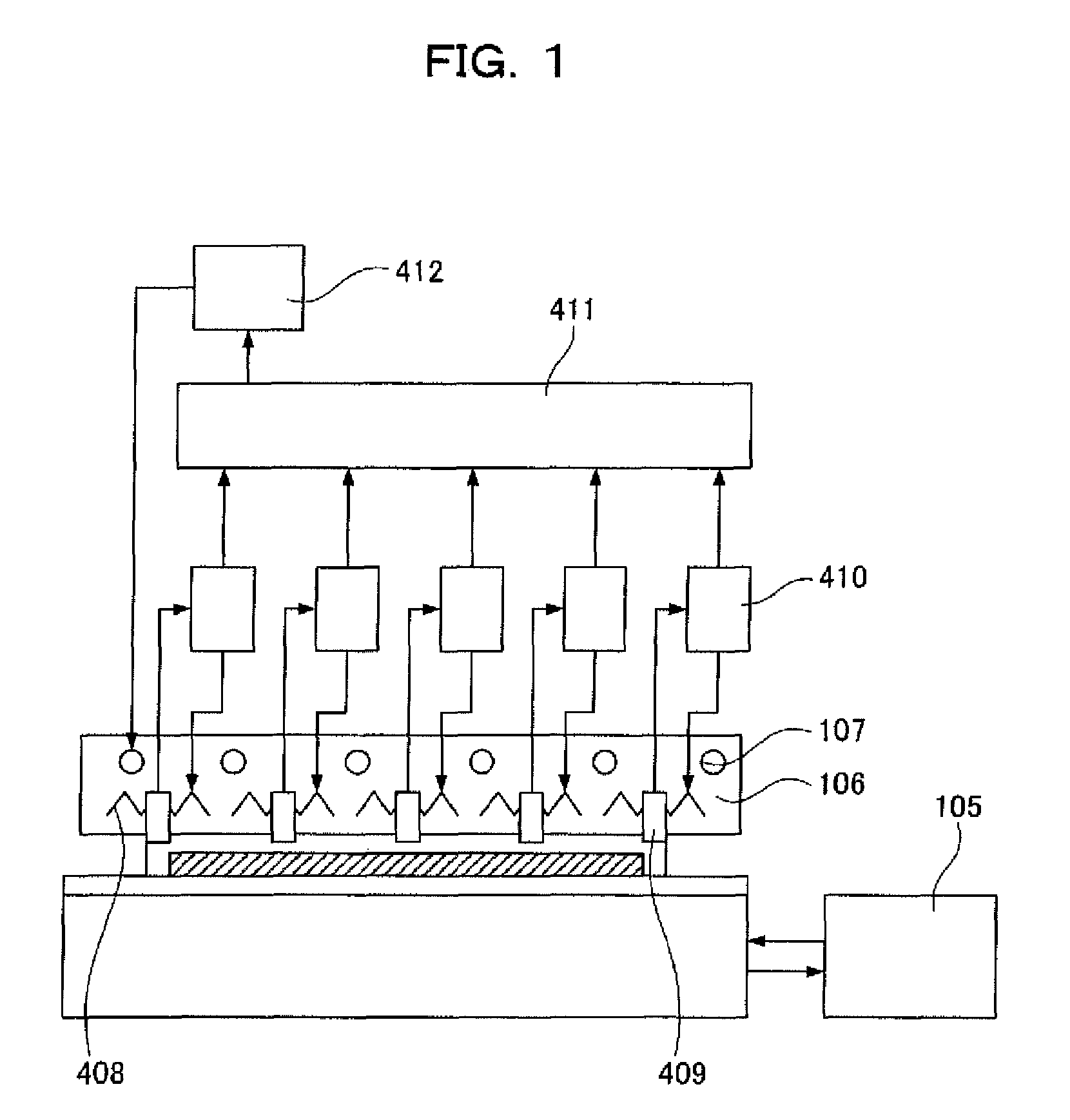Method and apparatus for wafer level burn-in
a technology of burnin and wafers, applied in the direction of fault location by increasing the damage at fault, semiconductor/solid-state device testing/measurement, instruments, etc., can solve the problems of defective products flowing into the market, insufficient temperature load screening, and serious damage, and achieve high reliability
- Summary
- Abstract
- Description
- Claims
- Application Information
AI Technical Summary
Benefits of technology
Problems solved by technology
Method used
Image
Examples
embodiment 1
[0052]A wafer level burn-in apparatus and a wafer level burn-in method according to Embodiment 1 will be described with reference to FIGS. 1, 2, 3, and 4.
[0053]FIG. 1 is a schematic diagram illustrating the wafer level burn-in apparatus according to Embodiment 1. FIG. 2 is a diagram illustrating area division of a temperature regulation plate according to Embodiment 1 of the invention. FIG. 3 is a schematic diagram illustrating a temperature control system for the temperature regulation plate according to Embodiment 1 of the invention. FIG. 4 is a diagram illustrating temperature control at the time of wafer level burn-in according to Embodiment 1 of the invention.
[0054]In Embodiment 1 shown in FIG. 1, as compared with the configuration of a device shown in FIG. 9, a temperature regulation plate 106 is divided into five areas of a central area a and its peripheral areas b to e as shown in FIG. 2, one heater 108, one temperature sensor 109, and one temperature regulator 110 for each ...
embodiment 2
[0060]A wafer level burn-in apparatus and a wafer level burn-in method according to Embodiment 2 will be described with reference to FIGS. 1, 2, 3, and 5.
[0061]FIG. 5 is a diagram illustrating temperature control at the time of wafer level burn-in according to Embodiment 2 of the invention.
[0062]In Embodiment 2 of the invention, the same device configuration as Embodiment 1 shown in FIGS. 1, 2, and 3 is used.
[0063]In the wafer level burn-in according to Embodiment 2, heating control is performed for each area so that all the predetermined values of temperature sensors 409a to 409e are 125° C. The flow rate of refrigerant is controlled by selecting the median value among the values measured by the temperature sensors 409a to 409e and performing the cooling operation with respect to the predetermined value of 125° C.
[0064]FIG. 5 is a graph illustrating the transition of the areas in which the temperatures selected as a control target of the refrigerant flow rate are measured, a tempor...
embodiment 3
[0067]A wafer level burn-in apparatus and a wafer level burn-in method according to Embodiment 3 will be described with reference to FIGS. 1, 2, 3, and 6.
[0068]FIG. 6 is a diagram illustrating temperature control at the time of wafer level burn-in according to Embodiment 3 of the invention.
[0069]In Embodiment 3 of the invention, the same device configuration as Embodiment 1 shown in FIGS. 1, 2, and 3 is used.
[0070]In the wafer level burn-in according to Embodiment 3, the heating control is performed for each area so that all predetermined values of temperature sensors 409a to 409e are 125° C. The flow rate of refrigerant is controlled by selecting the value closest to the average value of values measured by the temperature sensors 409a to 409e among the values or selecting the higher value where there are two candidate values, and performing cooling operation with respect to the predetermined value of 125° C.
[0071]FIG. 6 is a graph illustrating the transition of the areas in which t...
PUM
 Login to View More
Login to View More Abstract
Description
Claims
Application Information
 Login to View More
Login to View More - R&D
- Intellectual Property
- Life Sciences
- Materials
- Tech Scout
- Unparalleled Data Quality
- Higher Quality Content
- 60% Fewer Hallucinations
Browse by: Latest US Patents, China's latest patents, Technical Efficacy Thesaurus, Application Domain, Technology Topic, Popular Technical Reports.
© 2025 PatSnap. All rights reserved.Legal|Privacy policy|Modern Slavery Act Transparency Statement|Sitemap|About US| Contact US: help@patsnap.com



